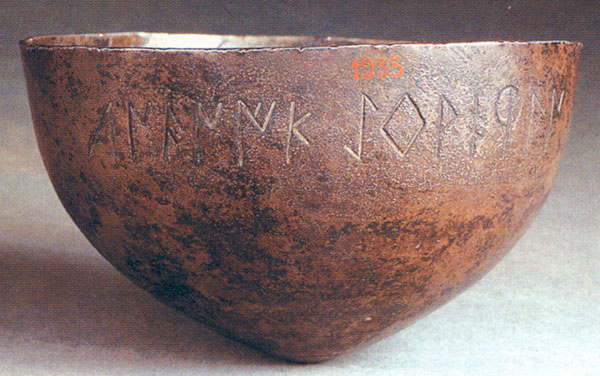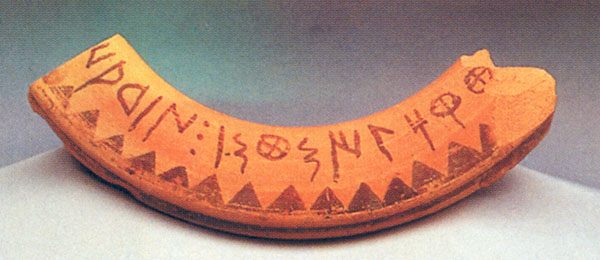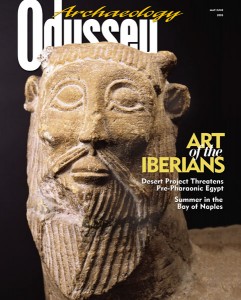Mute Inscriptions: Ancient Iberian Writing
Sidebar to: Warriors, Wolves, and Women


According to the Greek geographer Strabo (c. 64 B.C.–21 A.D), the ancient Iberians wrote down their laws and composed both poetry and prose. But not a single text of this kind has yet been unearthed. All we have are short inscriptions on stone slabs, lead sheets and pottery (see, for example, the silver bowl from Jaén and the vase fragment from Liria, above). Although we have many of these inscriptions, ancient Iberian, like the language of the Etruscans, remains undeciphered.
The Iberians left behind three different scripts. The oldest, dating to the eighth century B.C., was used to record the language of southwestern Iberia and was derived from the Semitic script of the Phoenicians, who had come to Iberia’s shores in search of tin, silver and gold. Like their Phoenician teachers, the Iberians, as far as we know, used writing for functional rather than literary purposes—to record inventories, perhaps, and to incise funeral inscriptions on stone grave markers.
Already a library member? Log in here.
Institution user? Log in with your IP address.

